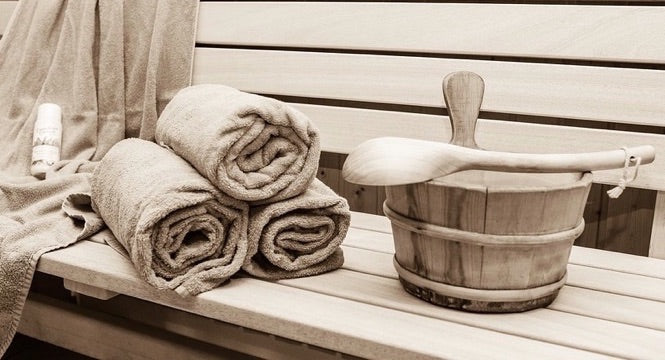Your Cart is Empty
FREE SHIPPING on US orders over $45. Save 25% With Code TAKE25 at checkout.
FREE SHIPPING on US orders over $45. Save 25% With Code TAKE25 at checkout.

What is a sweat gel and what do they do? In short, the ingredients in a sweat gel should work to improve circulation and promote body heat, thus sweating. This gel (or balm) will sit above skin and trap heat, enhancing the effectiveness of your workout by forcing your skin to push sweat above the gel.
Usually this effect is achieved using occlusive moisturizers, and may also include botanicals, vitamins, and other nutrients to enhance exercise, nourish skin, and hydrate so you get both internal and external health benefits.
An "occlusive" is a waxy substance that provides a tight barrier. In medical terms, occlusive means to "shut off." Think of an occlusive dressing given for trauma injuries. They’re used to seal particular types of wounds and their surrounding tissue off from air, fluids, and harmful contaminants, such as viruses and bacteria. They are used to control the cleanliness of the wound, stop bleeding, and slow the formation of scars.
In the fitness world however, an occlusive gives the sweat gel a thermic effect to produce internal heat; as a result, you’ll sweat profusely, workout efficiently, burn calories, increase circulation, and possibly lose weight!
When applying a sweat gel before exercise, one should be especially generous with the problem areas where fat accumulates, like legs, belly, and arms. The sweat gel should be used alone and not layered under or over creams as those could diminish the consistency of the sweat gel over your skin. When the workout is complete, the sweat gel should be removed from skin by showering or thoroughly wiping it off.
An effective sweat gel should contain powerful botanicals packed with vitamins, minerals, antioxidants, and other anti-aging ingredients to give you healthy, hydrated, and youthful skin. Ideal moisturizing ingredients for this purpose include coconut oil, jojoba oil, and shea butter. And to soften and promote healthy skin cell turnover, vitamins E and A make great additions. And, of course, like any skincare product, a good sweat gel should be free of parabens, phthalates, and sulfates.
Moisturizers are generally placed in one of three categories: emollients, humectants, or occlusives. Emollients are light oils or butters that smooth and soften; humectants, such as hyaluronic acid, attract other water molecules in the immediate environment to bind with them to enhance water absorption. Sweat gels contain occlusive moisturizing ingredients that contain high-lipid, often wax-like ingredients that form a film over skin, lock in moisture, and act as a barrier rather than soaking in.
According to Harvard Health, occlusive moisturizers include heavy oils and waxes (like petrolatum); silicon derivatives; fatty acids; fatty alcohols; vegetable waxes (like carnauba wax); etc. The Dermatologist points out that additional items, like vitamins, may be added. And other types of moisturizers and emollients can also have occlusive properties.
The circulatory system is made up of your heart and blood vessels. They run throughout your body, and that flow of nutrients, oxygen, and carbon dioxide around all the cells in your body is called circulation. When you are overweight your arteries become clogged with fat and they slow the blood from moving as quickly as it should. Exercise dilates the blood vessels and creates improved circulation.
Research has shown that if you want to improve your circulation you have to exercise. The American Heart Association says that over the past four decades, study after study have proven the link between physical activity and fitness and cardiovascular health.
Another benefit of exercise is that it increases the amount of adiponectin, a fat-torching hormone, critical in in insulin management and weight loss. Adiponectin decreases as your fat levels increase. The American Diabetes Associationreports on a study that found that adiponectin levels rose by 260% after two-three bouts of exercise.
We’re all born with a skin barrier and, when you think about it, that skin barrier is really what stands between us and the outside world. Skin barriers hold moisture in, and protect us from bacteria, pollutants, and other harmful substances.
Stress, such as emotional turmoil and sleep deprivation breaks down the skin barrier.
While there hasn’t been much study on the effects of physical exertion, i.e. exercise, on the skin barrier, it was found in a study conducted by The Journal of Investigative Dermatology, that exercise increased cytolytic T lymphocytes and helper T cells - the very cells that ward off infection, once again proving the benefits of exercise.
Good circulation, hormone health, and insulin management are hallmarks of overall wellness, all helped by the sweat gel. Good health will typically translate to vibrant, ageless skin.
Vitamins are just a few of the ingredients that can be added into a sweat gel to give additional benefits for skincare. Vitamin A encourages healthy skin cell production and fights off signs of aging. It stimulates collagen production for smoother, clearer skin.
Vitamin E is a natural antioxidant and transports nutrients, strengthening skin and nerves, and regenerating new skin cells.
Vitamin B5 retains moisture and promotes healing, reduces redness and irritation, and protects the skin barrier function by promoting cellular regeneration.
What is a sweat gel? It’s what you want if you want to release water retention, reduce the look of cellulite, and have glowing, ageless skin. It goes both ways: exercise improves circulation, and better circulation (via a stronger heart and better-nourished cells) improves exercise. Add powerful botanicals to the mix to maximize the benefits of the time the gel spends on skin, and you have a winning recipe for achieving your fitness (and skin fitness) goals!